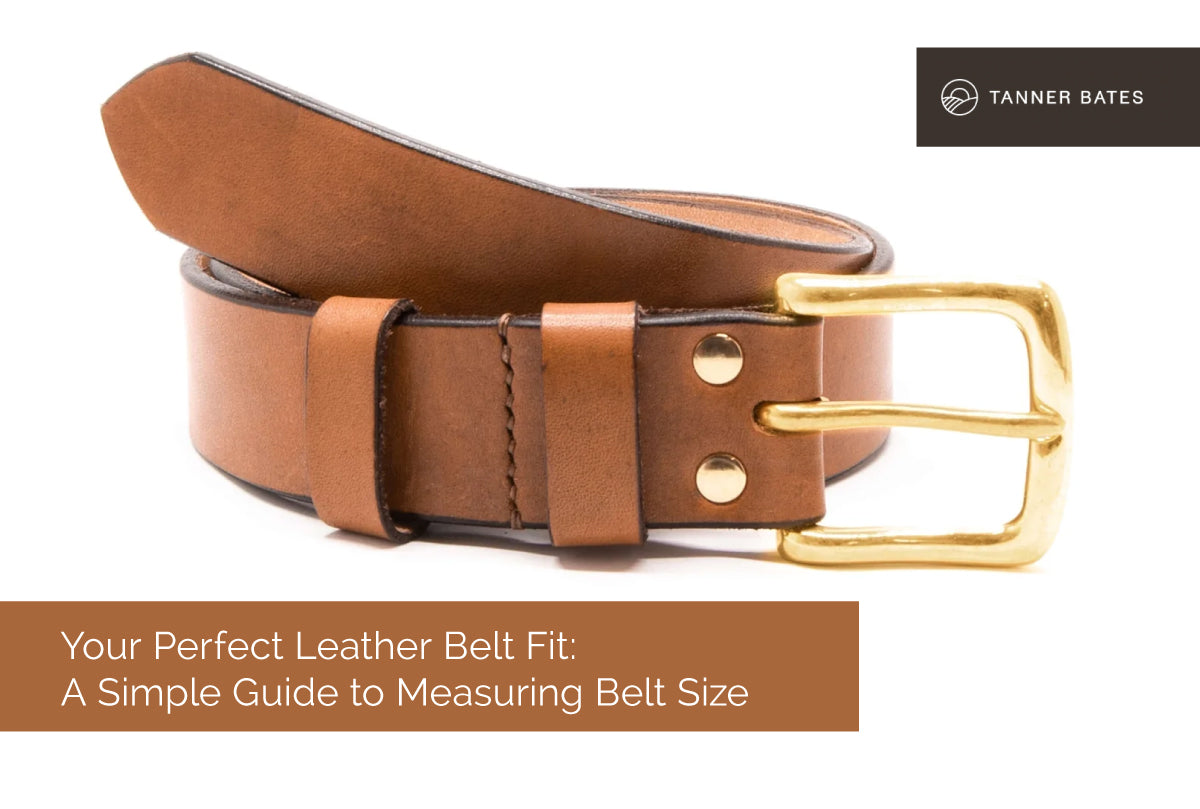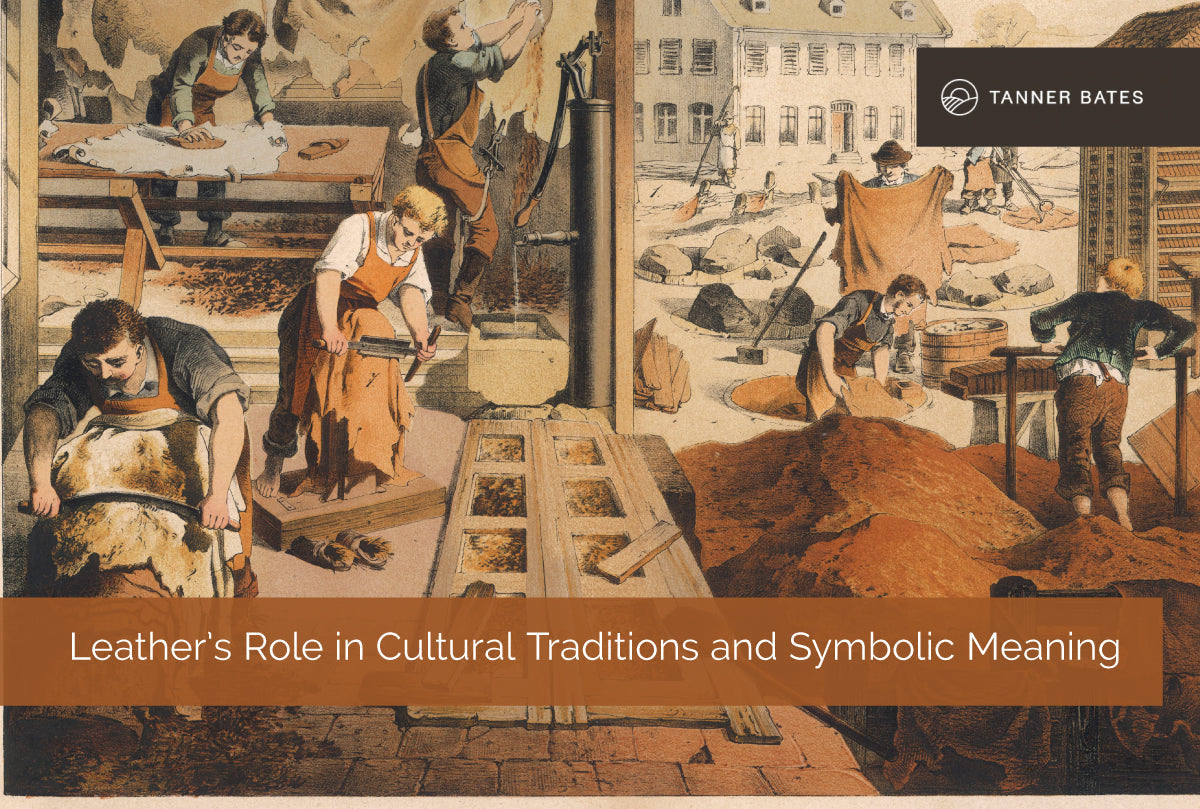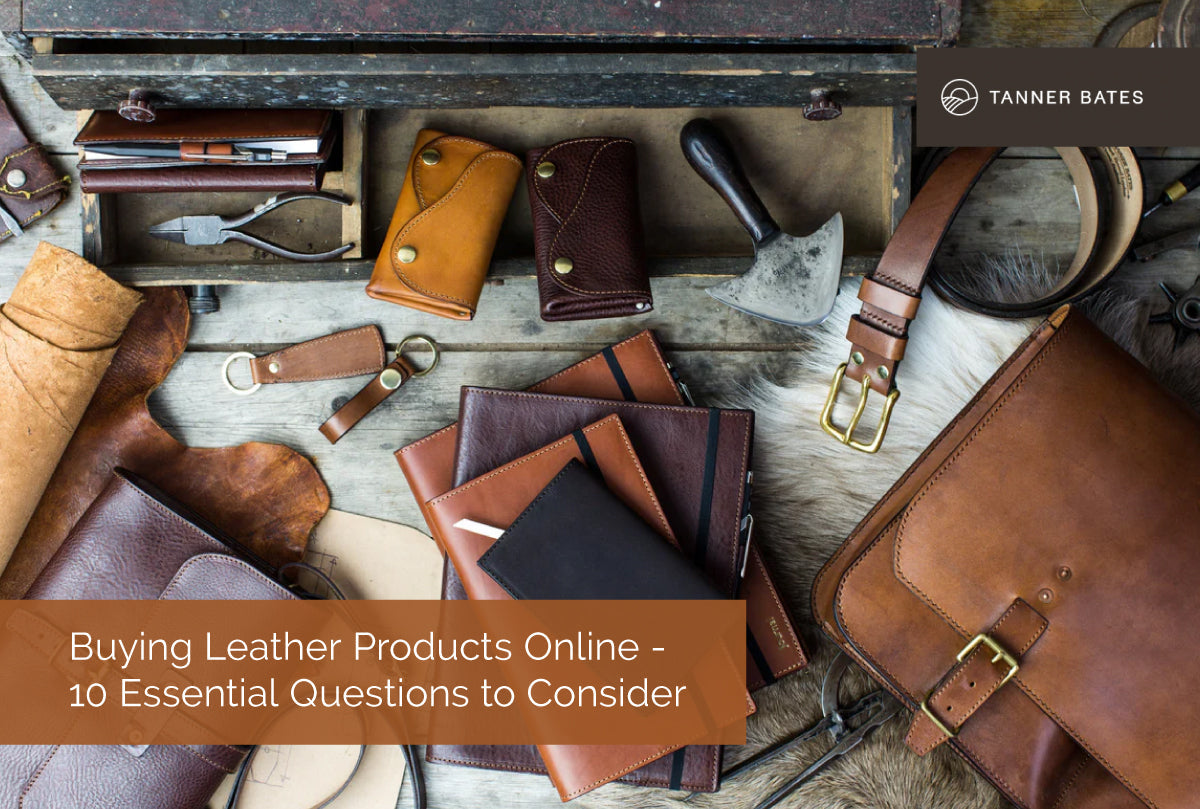
The Art of Ageing: Full Grain Vegetable-Tanned Leather's Patina Transformation

The Art of Ageing: Full Grain Vegetable-Tanned Leather's Patina Transformation
Located in Devon, England, Tanner Bates is known for its artisanal craftsmanship and the beauty of full grain vegetable-tanned leather. We love the natural ageing process, where each piece transforms and develops a unique patina that tells a story.
At Tanner Bates, we believe true quality comes from tradition and expertise, not fleeting trends. Full grain vegetable-tanned leather reflects this belief, becoming more beautiful and unique over time.
In this blog, we will explore how patina forms and why full grain vegetable-tanned leather is perfect for those who appreciate timeless, high-quality products.
Understanding Full Grain Vegetable-Tanned Leather
Full grain vegetable-tanned leather is the highest quality leather available. It retains the complete grain of the hide, including all its natural imperfections and markings. This leather undergoes a traditional tanning process using natural tannins extracted from bark, leaves, and other plant materials. This process is environmentally friendly and preserves the natural beauty and strength of the leather.
Unlike other types of leather, such as corrected grain or genuine leather, full grain leather is not sanded or buffed. This means it retains its natural surface, which is why it ages so beautifully and uniquely. Each piece of leather tells its own story, from the animal it came from to the hands that crafted it into a beautiful product.
The Beauty of Patina: What It Is and Why It Matters
Patina is the natural ageing process of leather, resulting in a rich and distinctive surface appearance that develops over time. It's one of those things that makes leather truly special. Imagine a pair of well-worn boots or a cherished leather bag that has travelled with you for years – the character and story they carry are embodied in their patina.
Patina develops as the leather absorbs oils from your skin, exposure to sunlight, and moisture from the environment. Here are some reasons why patina is so highly regarded:
- Enhanced Appearance: Over time, the leather's surface becomes more lustrous and visually appealing, adding depth and richness to its colour.
- Uniqueness: Each piece of leather develops a one-of-a-kind look, reflecting its individual history and use. No two pieces of leather will ever age in the same way.
- Increased Durability: The ageing process actually strengthens the leather, making it more robust and resistant to wear. It's like fine wine – it gets better with age.

The Process of Patina Formation
The formation of a patina is a gradual process influenced by daily use and environmental conditions. Every touch, every bit of sunlight, and every drop of moisture contribute to this beautiful transformation. Here's how it typically unfolds:
- New Leather: Initially, the leather has a smooth, uniform appearance, fresh from the tannery.
- Early Stages: Light exposure and handling start to darken the surface, introducing slight colour variations and adding character.
- Mature Patina: With continued use, the leather develops a rich, deep colour and a more pronounced texture, becoming a true testament to its journey.
Common factors influencing the patina include sunlight, handling, moisture, and even the climate. A leather bag used daily will show a different patina than a leather wallet kept in a pocket.
Why Full Grain Vegetable-Tanned Leather is Ideal for Patina
Full grain leather is particularly suited for developing a rich patina due to its natural qualities. It retains the grain and natural markings of the hide, which means each piece starts with a unique character. This type of leather is highly absorbent, allowing it to take on oils and moisture, which enhance its ageing patterns.
Moreover, the vegetable-tanning process itself plays a crucial role. Vegetable tanning is an environmentally friendly process that uses natural tannins and avoids harsh chemicals, allowing the leather to breathe and age gracefully. The process results in a more durable and long-lasting leather, perfect for items that you want to stand the test of time.
Benefits of Full Grain Vegetable-Tanned Leather
There are numerous advantages to choosing full grain vegetable-tanned leather, making it an excellent investment. This leather is incredibly long-lasting, often becoming a cherished heirloom passed down through generations. The natural tanning process is sustainable and environmentally friendly, contributing to a greener planet.
Vegetable-tanned leather is less likely to cause skin irritations, making it suitable for those with sensitive skin. Products from Tanner Bates showcase meticulous craftsmanship and superior quality, ensuring that each piece is both functional and beautiful.
How to Care for Your Vegetable-Tanned Leather to Enhance Patina
Proper care is essential to encourage a beautiful patina. Regularly clean your leather with a damp cloth and condition it with high-quality leather conditioners to keep it moisturised. This prevents the leather from drying out and cracking. Protect your leather from excessive water and harsh chemicals to prevent damage. While a little rain won't hurt, prolonged exposure can be detrimental.
At Tanner Bates, we offer a range of leather care products designed to help you maintain your leather goods and enhance their natural beauty. These products are specially formulated to work with our vegetable-tanned leather, ensuring the best care for your items.
Conclusion
Full grain vegetable-tanned leather from Tanner Bates offers a unique combination of durability, aesthetic appeal, and environmental benefits. The natural patina that develops over time adds to its charm and individuality, making each piece truly one-of-a-kind. By choosing our vegetable-tanned leather products, you invest in items that not only look better with age but also stand the test of time.
To explore our comprehensive range of high-quality leather products and experience the art of ageing leather firsthand, visit our website at Tanner Bates. Discover the beauty of full grain vegetable-tanned leather and find the perfect piece to accompany you on your journey. Embrace the timeless elegance and unmatched quality that only Tanner Bates can offer.
FAQs About Full Grain Vegetable-Tanned Leather and its Patina Transformation
1. What is full grain vegetable-tanned leather?
Full grain vegetable-tanned leather is the highest quality leather available, known for retaining the complete grain of the hide, including all its natural imperfections and markings. This type of leather undergoes a traditional tanning process using natural tannins extracted from bark, leaves, and other plant materials. Unlike other types of leather, such as corrected grain or genuine leather, full grain leather is not sanded or buffed, preserving its natural strength and character.
2. How does patina develop on vegetable-tanned leather?
Patina develops as the leather absorbs oils from your skin, exposure to sunlight, and moisture from the environment. Over time, these elements cause the leather to darken and develop a rich, deep colour and a more pronounced texture. The process enhances the leather's appearance, making it more lustrous and unique, and increases its durability.
3. Why is full grain vegetable-tanned leather ideal for patina?
Full grain vegetable-tanned leather is particularly suited for developing a rich patina due to its natural qualities. It retains the grain and natural markings of the hide, which means each piece starts with a unique character. This type of leather is highly absorbent, allowing it to take on oils and moisture, which enhance its ageing patterns. The vegetable-tanning process uses natural tannins and avoids harsh chemicals, allowing the leather to breathe and age gracefully.
4. What are the benefits of full grain vegetable-tanned leather?
There are numerous advantages to choosing full grain vegetable-tanned leather. This leather is incredibly long-lasting, often becoming a cherished heirloom passed down through generations. The natural tanning process is sustainable and environmentally friendly, contributing to a greener planet. Vegetable-tanned leather is less likely to cause skin irritations, making it suitable for those with sensitive skin. Products from Tanner Bates showcase meticulous craftsmanship and superior quality, ensuring that each piece is both functional and beautiful.
5. How should I care for my vegetable-tanned leather to enhance the patina?
Proper care is essential to encourage a beautiful patina. Regularly clean your leather with a damp cloth and condition it with high-quality leather conditioners to keep it moisturised. This prevents the leather from drying out and cracking. Protect your leather from excessive water and harsh chemicals to prevent damage. While a little rain won't hurt, prolonged exposure can be detrimental.
Also in Knowledge base

Your Perfect Leather Belt Fit: A Simple Guide to Measuring Belt Size
Ever bought a belt online only to discover it's either cutting into your waist or sliding down your hips?
The frustration of getting belt sizing wrong is real. Too tight, and you're uncomfortable all day. Too loose, and you're constantly adjusting. There is actually a simple rule that takes the guesswork out of measuring belt size entirely.

Leather’s Role in Cultural Traditions and Symbolic Meaning
What if a single material could embody resilience, artistry, and cultural identity all at once?
Leather does just that. Its story spans millennia, touching every corner of human civilisation. From the armour of ancient warriors to modern luxury fashion, leather has been more than just a material - it’s a symbol of strength, sophistication, and heritage.

Buying Leather Products Online - 10 Essential Questions to Consider
Shopping for leather products online can be exciting, but it’s not always easy to know if you’re making the right choice. Leather goods often come with a price tag that reflects their quality and craftsmanship, so it’s important to make an informed decision.

